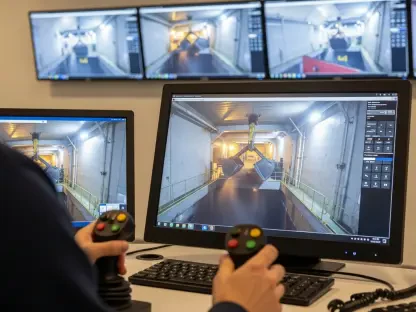In the realm of telecommunications, China Tower stands out as a transformative force in digital infrastructure by integrating Artificial Intelligence (AI) and the Internet of Things (IoT) into its operations. This market analysis explores how China Tower is redefining telecom networks, expediting digital connectivity in various sectors, and paving the way for future technological advancements. As the industry becomes increasingly competitive, understanding China Tower’s strategic approach becomes vital for stakeholders aiming to navigate and succeed in this evolving market landscape.
Unveiling the Connectivity Revolution
China Tower has positioned itself as a key player in the digital ecosystem, characterized by its ambitious endeavors to upgrade its telecom infrastructure to support emerging technologies. With its network of 5.6 million base stations and 2.1 million towers, the company is transforming these sites into intelligent nodes capable of handling advanced applications like edge computing, low-altitude drone networks, smart cities, and underground connectivity. This progression marks a significant shift in enhancing digital communication capabilities and aligning with modern connectivity demands.
A cornerstone of China Tower’s strategy includes leveraging AI and IoT to create a comprehensive digital framework. The incorporation of AI allows for improved infrastructure efficiency and responsiveness, which is crucial amid growing connectivity demands. Meanwhile, IoT integration supports real-time data exchange, facilitating functionalities such as underground connectivity and remote monitoring. This dual-pronged approach exemplifies a paradigm shift towards interconnected systems, enriching user experiences and streamlining operations across multiple sectors.
Drawing from Historical Context
To fully grasp China Tower’s current achievements in digital transformation, it is essential to consider the historical context of the telecommunications industry’s evolution. The consolidation of resources from China Mobile, China Unicom, and China Telecom in 2014 established a unified infrastructure base that enabled cost reductions and expanded coverage. This integration fostered an environment favorable for integrating cutting-edge technologies like AI and IoT, laying a robust foundation for the subsequent advancements made by China Tower.
The historical consolidation underscores the importance of shared infrastructure, providing the necessary scale and efficiency for modern innovations. This transformation not only optimized operations but also set a precedent for future trends and service enhancements within the telecom landscape. Recognizing these foundational strategies helps understand the current positioning and potential future influence of China Tower in shaping the telecommunications industry.
Pioneering Innovative Infrastructure
Enhancements Through AI
The deployment of AI at China Tower encourages a reimagined infrastructure, transforming conventional telecommunication sites into intelligent, dynamic nodes. AI integration aids in implementing edge computing technologies, thereby supporting advanced applications geared towards efficient connectivity. This shift towards AI-powered infrastructure not only boosts system capabilities but also ensures sustained performance as connectivity demands rise. Despite facing inherent challenges in scaling AI solutions, its incorporation reassures stakeholders of increased operational efficiency and responsiveness in telecom advancements.
IoT Empowering Connectivity
IoT solutions reinforce the dynamic transformation within China Tower’s infrastructure, enabling seamless real-time data transmissions that facilitate novel applications like underground connectivity and remote monitoring solutions. The integration of IoT illustrates the shifting focus towards interconnected networks, enriching user experiences and enhancing operational effectiveness. Nonetheless, as IoT integration progresses, security concerns necessitate robust measures to ensure safe deployment and secure data exchanges.
Addressing Regional and Technological Shapes
China Tower’s expansion involves navigating regional disparities and technological complexities, particularly in promoting green energy solutions. The adoption of solar power and Direct Current (DC) systems across regions showcases diverse methodologies influenced by local energy policies and technological readiness. As China Tower continues its nationwide rollout, these varied approaches introduce layers of complexity that require nuanced strategies for balancing regional advancements with standardized infrastructure objectives.
Emerging Shifts and Projected Pathways
The telecommunications sector is set for transformative shifts as emerging innovations like autonomous transport and ultra-secure communications take center stage. At the cutting edge of these advances, China Tower is poised to amplify its influence. Anticipated technological leaps, coupled with evolving regulatory frameworks, hint at potential shifts in the industry’s strategic directions, where factors such as sustainability and inter-industry collaboration will shape future infrastructure initiatives. Forecasts suggest that China Tower will continue propelling global telecom trends, maintaining its pivotal role in defining future standards.
Transition to Strategic Implementation
Analyzing China Tower’s initiatives highlights how other businesses can leverage similar AI and IoT integration approaches to boost efficiency. Embracing green energy solutions emerges as a key tactic for aligning with sustainability initiatives and minimizing environmental impact. Drawing insights from China Tower’s strategies allows businesses in various sectors to align their digital strategies with evolving standards, promoting operational synergy amid an evolving industry landscape.
Implications for Future Progress
Reflecting on these insights, the analysis demonstrates China Tower’s critical role in driving the telecommunications industry’s digital transformation through AI and IoT advancements. While the industry continues to evolve, it is vital for industry stakeholders to adopt a forward-thinking mindset, remaining ahead in an ever-shifting landscape. The strategic takeaway underscores connectivity’s significance as an essential utility, inspiring collaboration to advance technological innovations further.









